“Traumatized people chronically feel unsafe inside their bodies: The past is alive in the form of gnawing interior discomfort. Their bodies are constantly bombarded by visceral warning signs, and, in an attempt to control these processes, they often become experts at ignoring their gut feelings and in numbing awareness of what is played out inside. They learn to hide from their selves.”
― Bessel A. van der Kolk, The Body Keeps the Score: Brain, Mind, and Body in the Healing of Trauma
What is Trauma?
The main categories of trauma are referred to as:
- Acute Trauma – also referred to as Type 1 trauma
- Chronic Trauma – also referred to as Type 2 trauma
- Complex Trauma – also sometimes referred to as Type 3 trauma and/or Complex PTSD
- Post-traumatic Stress Disorder (PTSD)
- Secondary Trauma
First, let’s talk about Acute Trauma. This type of trauma is a result of a single stressful event that happens in one’s life such as an accident, a shooting, or a sudden loss of a loved one. This type of trauma can be differentiated further as “Big T” vs “Little T” trauma. “Big T” trauma involves an event that almost anyone would experience as traumatic, such as the Las Vegas shooting or a personal attack. “Little T” events are experienced as traumatic at a personal level, such as the loss of a job or failing an important test.
Chronic Trauma differs from Acute Trauma in that it occurs due to highly stressful events occurring over and over in a person’s life such as ongoing sexual/psychological/physical abuse, bullying, or domestic violence.
Complex Trauma is defined the same as Chronic Trauma except that the events are of an invasive and interpersonal nature. For example, exposure to events within the context of an interpersonal relationship can occur that leave the victim feeling trapped.
Post-traumatic Stress Disorder is found in the Diagnostic Statistical Manual V. 5 (DSM-V) and is the only diagnosable disorder among the various types of trauma. The DSM-V states that trauma is not an objectively diagnosable psychological condition. However, if a person who has experienced trauma meets the criteria of PTSD as listed in the DSM-V, then a diagnosis can be assigned. Not everyone who experiences trauma will develop PTSD.
Secondary Trauma is the emotional distress that can occur from hearing about a traumatic event. An example of this is often referred to as “Compassion Fatigue”.
How does trauma affect us?
Ability to tolerate stressors
Trauma often impairs a person’s ability to tolerate stressors in our lives. Trauma can negatively impact areas in the brain responsible for cognitive functions, such as short-term memory and emotional regulation. Therefore, since the brain has been “wired” differently than those not impacted by trauma, even everyday non-threatening situations can result in activation of the fight, flight, freeze response thus exceeding the optimal zone where one can manage stressors fairly easily.
Hyperarousal
The symptoms of hyperarousal are present even when real danger is not occurring. They include:
- Sleeping problems
- Panic
- Constant anxiety
- Becoming easily startled
- Irritability
- Anger and anger outbursts
- Intense guilt or shame
As the Sympathetic Nervous System (SNS) becomes activated, the SNS prepares the body for physical activity, redirecting oxygen-rich blood to areas of the body needed during survival. Hyperarousal (can’t calm down) is like having your foot on the gas pedal getting ready for action yet not going anywhere. Trauma brains, primed to deal with nearly constant stress, can struggle to respond appropriately to situations that would otherwise appear normal and non-threatening. Although activating the SNS is necessary for survival and managing stressors in the short term, staying stuck in the SNS, staying on high alert, can result in long-term complications. Our bodies are well equipped to handle stress in small doses, but when that stress becomes chronic, the effects on the body can be debilitating such as intense emotional pain, uncontrollable rage, organ trouble, and sleep disorders.
Hypo arousal
This is defined as a dysregulation characterized by a low state of physiological arousal, emotional numbing, exhaustion, total shut down and a disconnection between body and feelings.
Self-destructive behaviors
Self-destructive behaviors are used to self-medicate and often result in a person’s world becoming smaller and smaller. Self-destructive behaviors include:
- Physical self-harm, such as “cutting”, hitting oneself, or pulling one’s hair out.
- Overuse of substances such as drugs and alcohol.
- Excessive behaviors such as binge eating, sexually acting out, pornography addiction, and gambling addiction.
Other diagnosable conditions
Trauma can lead to depression, disassociation, the development of personality disorders, and physical health problems.
Getting Help
It is important to obtain the help of an experienced trauma counselor
Making an appointment and coming in or having a telehealth session with an experienced trauma counselor is the first significant step to start the healing process. Initially, during the first session, an intake involves gathering information to help formulate the direction of one’s therapy.
Disclosure of trauma details is a slow process
Many victims of trauma do not seek help because of the desire to not relive their traumatic experiences. However, it is not expected that a client disclose details of their trauma at this point or any point until they feel that they have developed a trusting relationship with their therapist. Even then, there are ways to work through trauma without talking in detail about the trauma. The experience of emotional overwhelm is similar to that of a shaken bottle of soda. Inside the bottle is a tremendous amount of pressure. The safest way to release the pressure is to open and close the cap in a slow, cautious and intentional manner so as to prevent an explosion. (Rothschild, 2010)
The Stages of Trauma Work
Stage 1 – Learning Healthy Coping Strategies
The first stage of recovery is establishing a sense of safety/stabilization by learning healthy coping strategies to manage uncomfortable feelings in the present. This can include diverse coping skills. Here is a list of many of these coping skills:
- Diaphragmatic breathing
- Journaling
- Identifying and challenging irrational thinking
- Meditation
- Mindfulness
- Muscle relaxation
- Yoga
- Tai Chi
- Establishing a worry time
- Gradual exposure
- Establishing a consistent sleep schedule
- Exercise and a healthy diet
- Grounding techniques
- Affirmation work
- Setting boundaries
- Containment
- Managing different emotions
- Case management
- Learning impulse control
- Learning how to regulate and manage difficult/overwhelming emotions
- Self-care
As new healthier coping skills are established, we can work on eliminating self-destructive behaviors. This takes as long as it needs to take and there is no urgency to move forward until you agree that you are ready. Assessment is an ongoing process as together the therapist and client decide when to move into the next phase of change which is the processing of the trauma itself.
Stage 2 – Remembrance and Mourning
Mourning and feeling all of the loss and pain is difficult but remember that “You are not alone”. Your therapist will be there for support and to witness your courage as you move through this stage. Clients often report a deep sense of loss while simultaneously feeling lighter and more whole as they move forward without hiding behind the emotional pain. Healing involves learning how to adapt and adjust and this takes time. It is not like being “cured” but learning to live with the trauma without it taking over your life.
Different Techniques to process through the trauma include:
- Cognitive Processing Therapy (CPT)
- Cognitive Behavioral Therapy (CBT)
- Somatic Experiencing
- Eye Movement Desensitization Reprocessing (EMDR)
- Narrative Trauma Therapy
- Behavioral Therapy
- Psychodynamic Therapy
- Clients are sometimes referred to a psychiatrist for pharmacotherapy as another tool to help one move towards integration and wellness.
Stage 3 – Reconnection and Integration
So, what does getting better look like? Here are some examples:
- You are rebuilding your life and relationships in the present.
- You are now capable of having future goals.
- You are reconnecting with others in a healthy way.
- Your daily function is improved, including the regulation of your nervous system.
- You are overcoming your addictions and other destructive behaviors.
- You have eliminated or reduced your trauma symptoms.
- You feel integrated and whole and like you are operating from a place of empowerment and strength.
- You are using new healthy coping skills to reduce the probability of relapse.
- You have discontinued relationships that are toxic.
- You have increased self-esteem and better sense of self.
Learning how to get past one’s past in a safe way is what trauma work encompasses. If you or a family member or friend is suffering from past unresolved issues, know that there is help available and you don’t have to do this alone. My motto is that “I am always for the least amount of work for the biggest payoff” when it comes to treating trauma. By that, I mean that you don’t have to dig up every detail. If something is not bothering you in the present, then leave it be. Please call us to start your healing journey.

Linda Mikesic, LCSW, LCDC, SAP
Linda Mikesic is a licensed therapist at Three Oaks Counseling & Psychiatry Group in Georgetown, Texas where she specializes in trauma and addiction.

